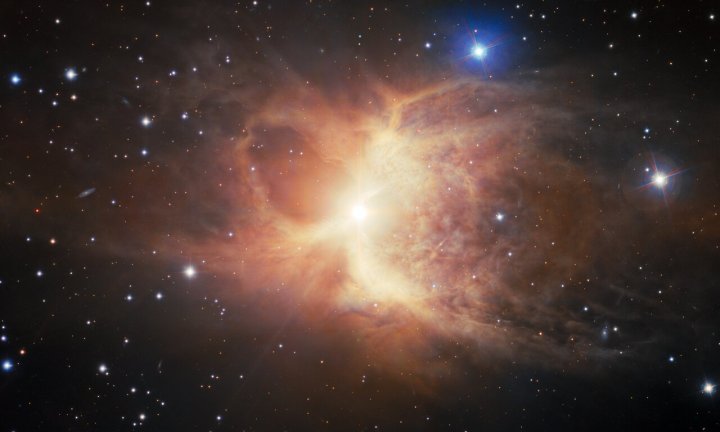Nebulae are some of the most beautiful structures to be found in space: vast clouds of dust and gas that are illuminated by light from nearby stars. These regions are often busy sites of star formation, as new stars are born from clumps of dust that collect more material due to gravity. Within the category of nebulae, there are different types such as emission nebulae, where the gases are ionized by radiation and glow brightly, or supernova remnants, which are the structures left behind after massive stars come to the end of their lives and explode.
A recent image captured by NOIRLab’s Gemini South telescope shows a rare type of nebula called a bipolar reflection nebula. Known as the Toby Jug Nebula for its similar shape to a traditional English jug, nebula IC 2220 is 1,200 light-years away in the constellation of Carina, or the Keel.

The double lobe of the nebula refers to the two looped structures originating from the nebula’s heart, a red giant star coming to the end of its life. Lower-mass stars like our sun reach this stage when they begin to run out of fuel and puff up to a large size, before throwing off layers of gas to create a planetary nebula.
“In about five billion years from now, when our sun has burned through its supply of hydrogen, it too will become a red giant and eventually evolve into a planetary nebula,” NOIRLab writes. “In the very distant future, all that will be left of our solar system will be a nebula as vibrant as the Toby Jug Nebula with the slowly cooling sun at its heart.”
The red giant, called HR3126, is thought to be partially responsible for the unusual double-lobed shape of the nebula. Astronomers theorize that the red giant once had a companion star, which has since been pulled apart into a dense disk of matter which rotates around the red giant. This shredding of the companion star could have spurred the formation of the two-lobed structure.
Editors’ Recommendations
Credit: Source link


Comments are closed.